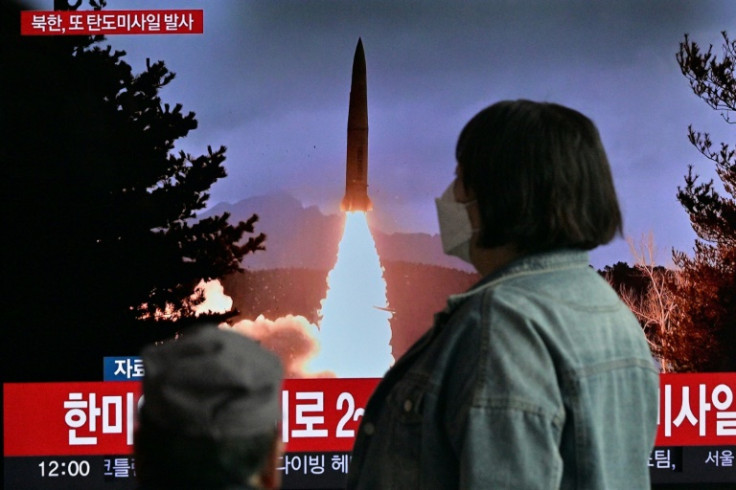North Korea Warns US, Allies Of 'Nuclear Attack' Over South Korea Drill 'Provocation'

KEY POINTS
- North Korea's commentary warned the U.S. and South Korea of "grave danger"
- North Korea is protesting the upcoming drills between the U.S., South Korea and Japan
- North Korea accused the U.S. and South Korea of "openly committing provocation"
North Korea continues to unleash nuclear threats over the joint military exercises conducted by the U.S. and South Korea.
In a commentary published on North Korea's state-run Korean Central News Agency (KCNA), the socialist state warned the U.S. and South Korea of "bringing themselves closer to a grave danger."
The commentary noted that during the 11-day joint military exercises by the U.S. and South Korea, the two countries conducted a joint tactical drill simulating an occupation of a North Korean city.
North Korea said the drill showed the "hostile acts against the DPRK have reached the worst phase."
North Korea is also protesting the planned joint naval drills of the U.S., South Korea and Japan next week in the East Sea, also known as the Sea of Japan. The U.S. would send its nuclear-powered aircraft carrier Nimitz to participate in the drills.
The socialist state has also expressed concern about another U.S.-South Korea joint military exercise in June, describing it as the "largest-ever combined firepower annihilation drill."
"Now that the U.S. and the South Korean puppets have openly committed a military provocation against the DPRK, the latter's option will correspond to that," according to the commentary published by KCNA.
"The U.S. and its followers should never forget the fact that their rival state has possessed the nuclear attack capability in practice as well as the characteristics of the people and army of the DPRK, which do not make empty talk."
North Korea flexed its military and nuclear capabilities throughout the 11 days of joint military exercises between the U.S. and South Korea.
The nuclear-armed state launched Hwasong-17, its largest intercontinental ballistic missile, believed to be capable of reaching the mainland U.S.
KCNA said Hwasong-17 flew 621 miles for just over 69 minutes before landing in the open sea.
North Korea has also conducted tactical drills to simulate an "overwhelming nuclear counterattack" against its enemies.
Kim Jong-un oversaw the drills, which included a ballistic missile launch designed to check the operational reliability of its nuclear explosion control devices and detonators.
On Tuesday, North Korea unveiled a new nuclear warhead, called Hwasan-31, during Kim's visit to the country's Nuclear Weapons Institute.
Experts are worried that North Korea's production of smaller nuclear warheads showed that the isolated country is making significant progress in its nuclear weapons program.
Army Lt. Gen. Scott Berrier, the director of the Defense Intelligence Agency (DIA), warned that the socialist state is "much more dangerous" since the North Korean leader continues to improve its military capabilities through a series of combat drills and missile test launches.

© Copyright IBTimes 2025. All rights reserved.






















